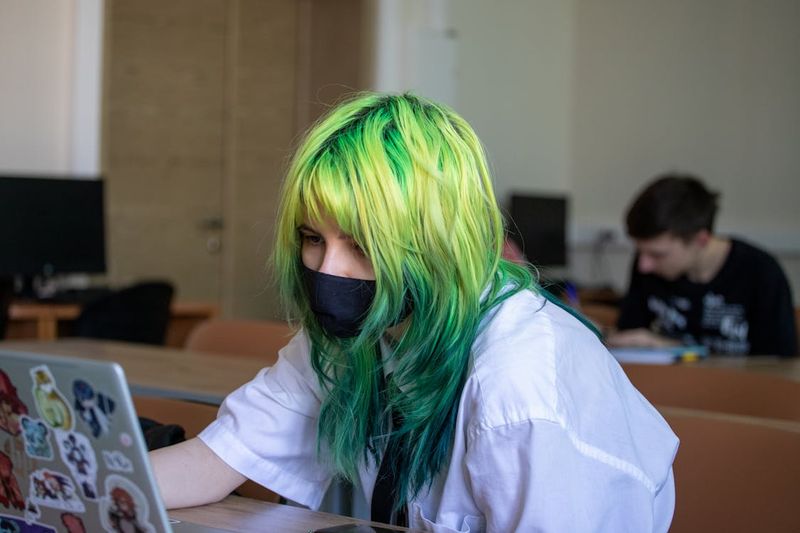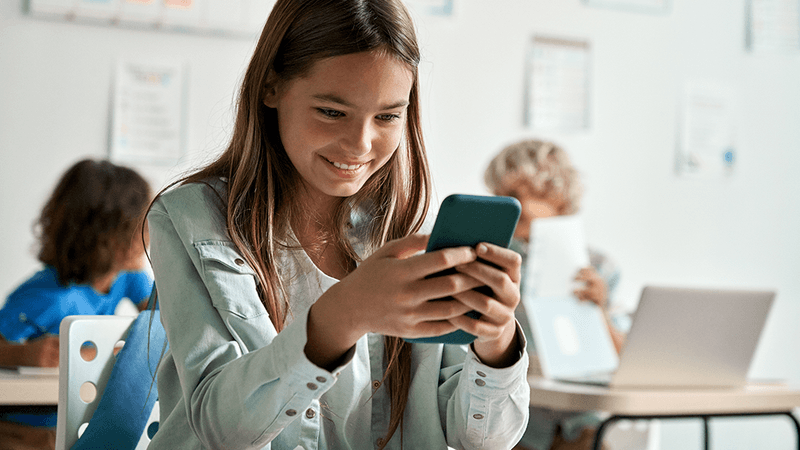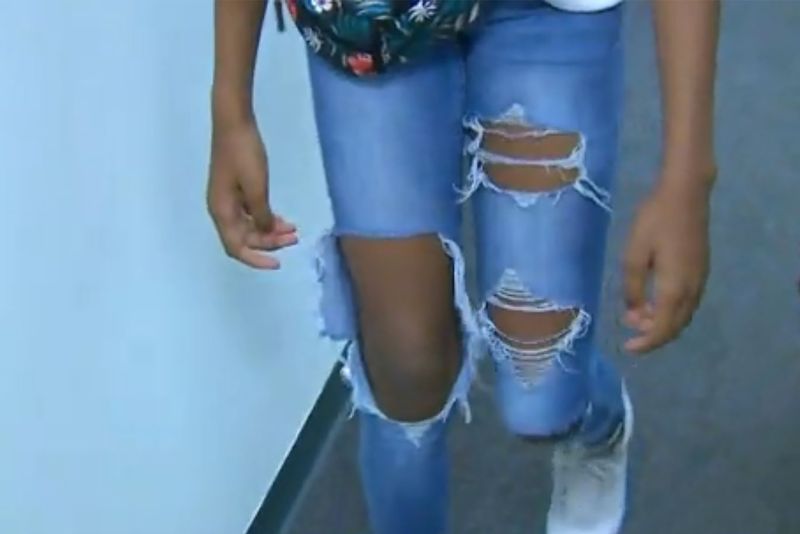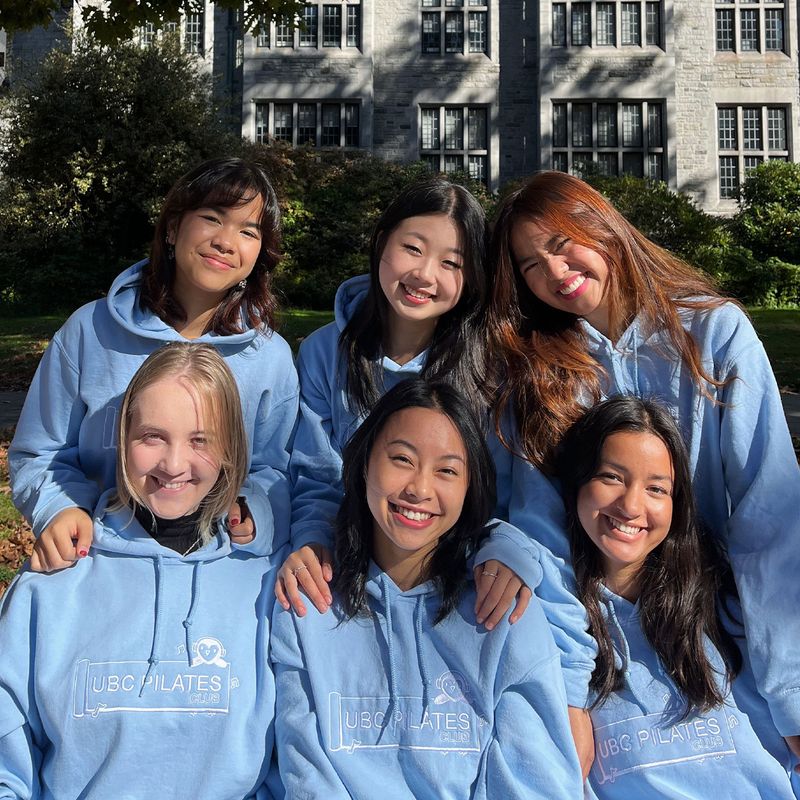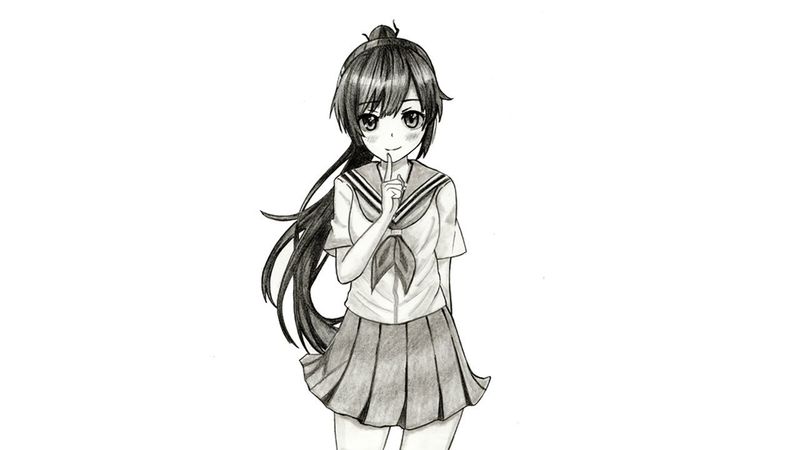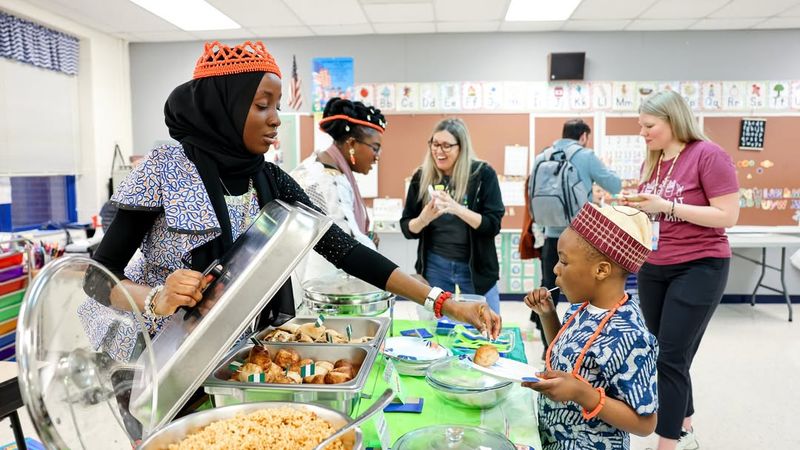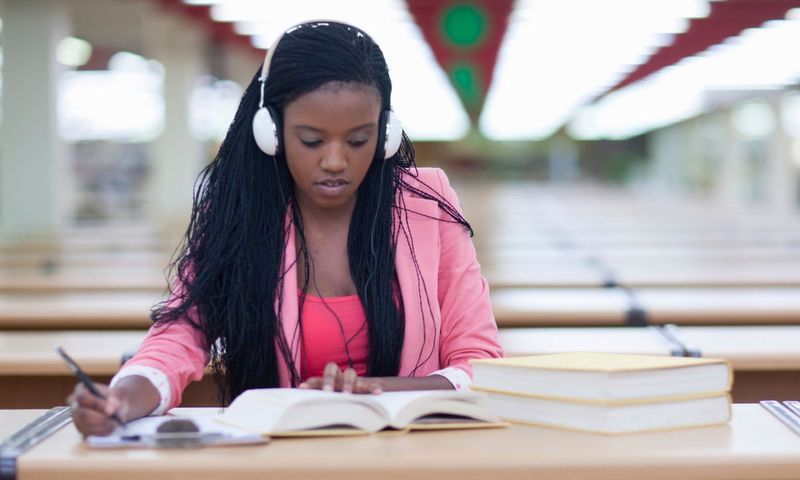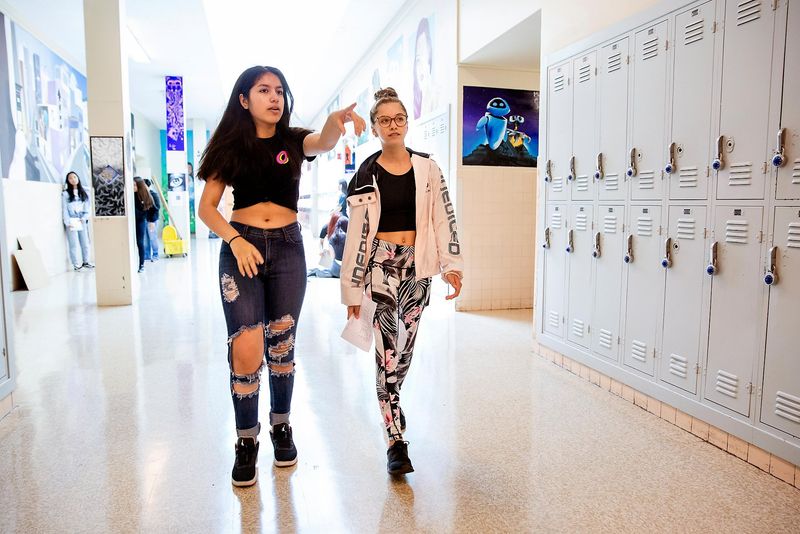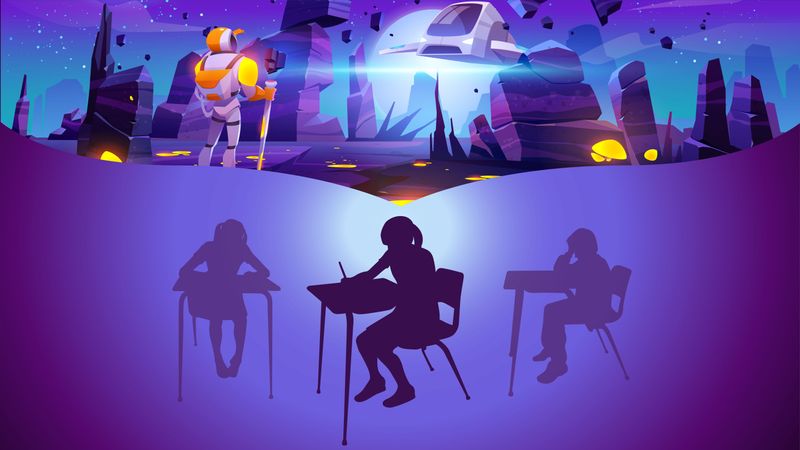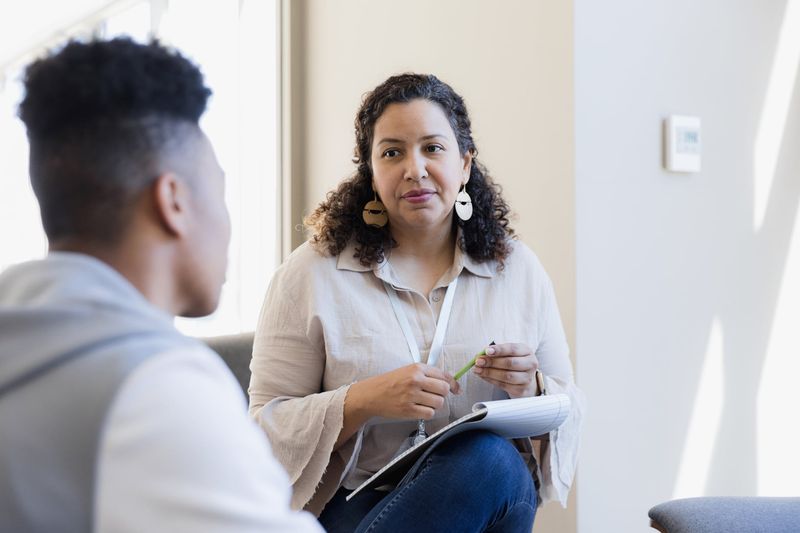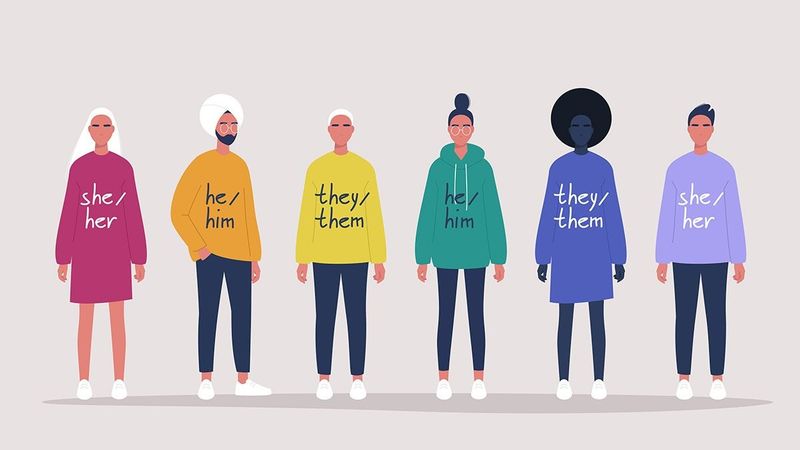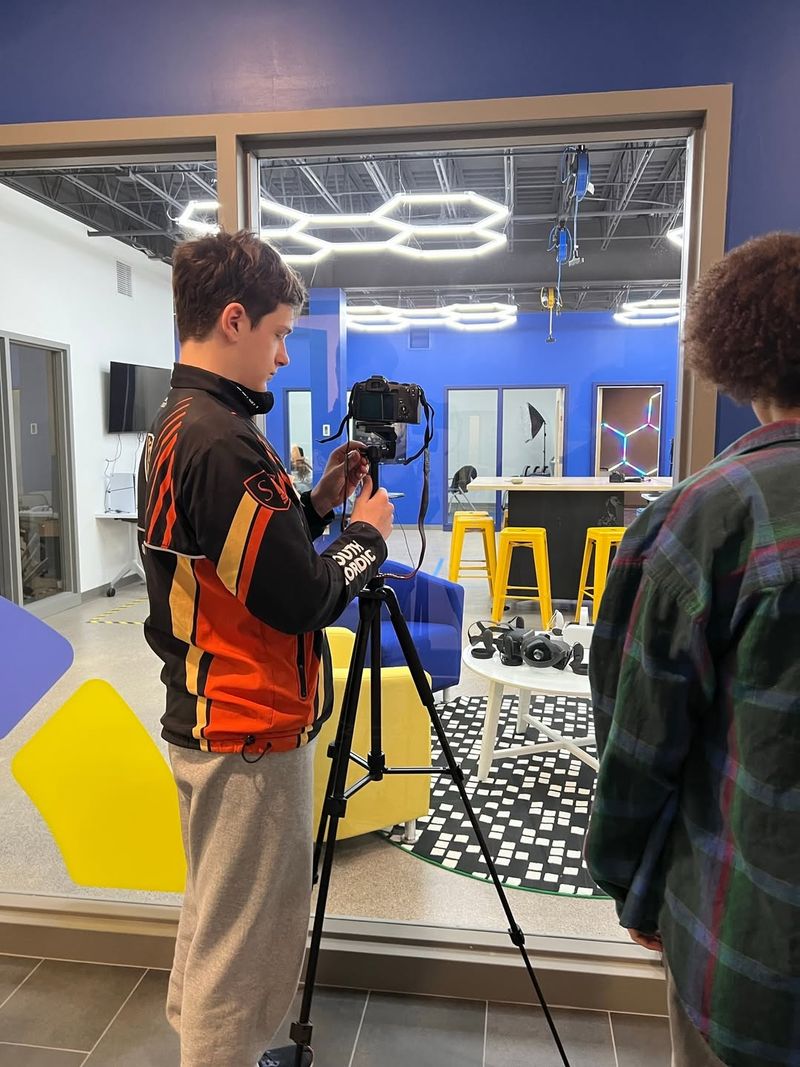Time sure does change things. What used to get kids sent to the principal’s office—or even expelled—would barely raise an eyebrow today. From dress code violations to tech faux pas, here are 17 innocent things kids once got in big trouble for that are now totally normal (and sometimes encouraged!).
1. Having Dyed Hair
Back then, a student sporting blue streaks in their hair was asking for trouble—often detention or worse. Fast forward to today, and rainbow hairstyles are a vibrant form of self-expression that even some teachers embrace. The once frowned-upon dyed hair is now celebrated as a way for students to showcase their creativity and personal style. In many schools, hair color policies have relaxed, allowing for colorful expressions in the hallways. The world has certainly come a long way in recognizing that hair is a canvas for individuality, not a barometer of discipline.
2. Using a Cell Phone at School
Remember when a ringing phone could land you in hot water? Just a decade ago, strict bans on cell phones in schools were the norm. Now, they’re indispensable tools for learning. Whether it’s for conducting quick research, participating in class polls, or even submitting assignments, phones have become an integral part of the educational landscape. Schools have adapted to integrate technology, understanding that these devices can enhance rather than distract from learning. It’s a digital age revolution, turning what was once a classroom nuisance into a powerful educational ally.
3. Wearing Ripped Jeans
Once upon a time, showing up in ripped jeans could mean a quick trip to the principal’s office for violating the dress code. Today, those very same jeans are a fashion statement embraced by students and teachers alike. In fact, some schools have even gone so far as to create branded distressed gear. What was once seen as disrespectful is now just another way for teens to express their unique sense of fashion. Schools have shifted focus from policing attire to fostering an environment where individuality is celebrated—not penalized.
4. Bringing a Tamagotchi or Game Boy
In the past, bringing a Tamagotchi or Game Boy to school was a surefire way to have it confiscated. These electronic devices were seen as distractions that had no place in an educational setting. Fast forward to today, and kids casually carry full-on gaming consoles in their backpacks, even using them during break times. The perception has shifted, with many understanding that gaming can be both a hobby and a way to develop strategic thinking. It’s a testament to changing attitudes on how leisure and learning can coexist in harmony.
5. Talking Back (With a Valid Point)
Once upon a time, questioning authority was an act of rebellion warranting an instant write-up. Nowadays, students are encouraged to speak up, debate, and advocate for themselves, especially when they have valid points to make. Classrooms have transformed into spaces of open dialogue where teachers appreciate and even foster critical thinking. Encouraging students to question and discuss helps them develop reasoning skills and confidence. This shift marks a move towards inclusivity and respect, valuing students’ voices as an essential part of the learning environment.
6. Wearing Hoodies
Hoodies were once seen as gang-related or a security risk, often leading to reprimands or requests to remove them. Today, they’ve become a staple of school attire, representing comfort and school spirit. Many schools even sell their own branded hoodies as part of their official merchandise. This change reflects a broader trend of relaxed dress codes aimed at creating a more comfortable and inclusive environment. Hoodies now symbolize a laid-back yet engaged student body, illustrating a shift in focus from outdated stereotypes to modern understanding.
7. Drawing Anime or Gothic Art
In the past, drawing anime or gothic art was sometimes deemed disturbing or a cry for help, leading to concern from teachers and parents. Today, these art forms are celebrated, often included in school art curriculums. Students who express themselves through these styles are applauded for their creativity and are even encouraged to enter art competitions or apply for scholarships. The recognition of diverse artistic talents reflects a broader appreciation for creativity, allowing students to explore their passions without fear of judgment or misunderstanding.
8. Bringing Cultural Food for Lunch
Years ago, bringing cultural food for lunch could lead to teasing or even disciplinary action due to unfamiliar smells or appearances. Today, schools celebrate diversity in cuisine, encouraging students to share their food and cultural stories with peers. Lunches have transformed from a potential source of embarrassment to a delightful way to learn about different cultures and traditions. This acceptance promotes an inclusive atmosphere where students gain appreciation for global diversity. It’s a delicious way for kids to embrace their heritage and broaden their culinary horizons.
9. Listening to Music in Class
The days of automatic detention for sneaky headphone use are long gone. Once, catching a student listening to music in class was an instant infraction. Now, music is embraced as a tool to aid concentration and enhance the learning environment. Lo-fi playlists and classroom Spotify stations provide background tunes that promote focus and relaxation. Teachers recognize the benefits of music in maintaining a calm and productive classroom atmosphere. Allowing students to listen responsibly turns music from a distraction into a supportive element of modern education.
10. Showing Shoulder or Knee
In past decades, school dress codes were strict, with shoulders and knees often needing to be covered to avoid punishment. Today, many schools have relaxed their dress codes, focusing less on body policing and more on allowing comfort within reason. This evolution acknowledges the outdated nature of over-policing attire, promoting a more inclusive and equitable school environment. Students now express themselves in attire that suits their personal style, without fear of reprimand, as schools focus on more relevant educational issues.
11. Writing Fan Fiction or Fantasy Stories
Fan fiction and fantasy stories were once scoffed at as distractions from “real” writing. Today, creative writing is nurtured across subjects, with fan fiction even being part of some curricula. Schools recognize the value in encouraging imaginative storytelling, as it nurtures creativity and critical thinking. Students are empowered to explore boundless worlds within their minds, blending passion with academic pursuits. This change highlights the importance of creativity in education, providing students with the freedom to express themselves in ways that inspire both themselves and others.
12. Using Slang or Internet Speak
Once upon a time, using slang or internet speak in schoolwork was grounds for a red pen assault. Teachers would groan at “LOL” or “BRB” scrawled across assignments. Now, digital communication has found its way into education. Teachers incorporate memes and internet culture in presentations, acknowledging students’ realities. Understanding the language of the tech-savvy generation fosters better communication and engagement. As schools adapt to modern communication styles, they create bridges between traditional academics and contemporary digital fluency.
13. Wearing Black Nail Polish
Once deemed too “goth” or “rebellious,” black nail polish was frowned upon in school settings. Today, it’s embraced as a gender-inclusive fashion choice, practically a neutral color. Students express their personalities through nail art without fear of retribution. The acceptance of diverse fashion choices reflects a broader understanding of individuality and self-expression. Schools now focus more on fostering acceptance than enforcing outdated stereotypes, allowing students to explore their identities freely and confidently through personal style.
14. Being Open About Mental Health
In the past, discussions about anxiety or depression were often dismissed as attention-seeking. Today, mental health is recognized as vital, with schools offering wellness counselors, therapy dogs, and mindfulness apps. Students openly discuss their mental health, fostering a community of support and understanding. Schools prioritize mental well-being, creating environments where students feel safe to seek help. This cultural shift is crucial, as it promotes awareness and de-stigmatizes mental health challenges, empowering students to take control of their emotional well-being.
15. Doodling on Notebooks (or Desks)
Once considered a sign of inattention or even vandalism, doodling on notebooks or desks could lead to suspension. Today, it’s recognized as a form of creativity and a tool to help focus. Schools encourage students to doodle as a method of processing information, understanding it as a productive outlet. This shift highlights the integration of mindfulness and creativity in education, where artistic expression is seen as beneficial rather than disruptive. Embracing doodling acknowledges the diverse ways students learn and engage with materials.
16. Using ‘They/Them’ Pronouns
In the past, nonbinary identities were often misunderstood, resulting in discrimination or punishment. Today, many schools include pronoun preferences on ID cards and forms, with teachers receiving training on inclusivity. This acceptance fosters a safe environment where students feel respected for who they are. Recognizing diverse gender identities in schools signifies a broader cultural shift towards inclusion and equality. By embracing pronoun diversity, educational institutions champion respect and understanding, paving the way for a more inclusive future.
17. Starting a YouTube or TikTok Channel
Creating videos at school or discussing a personal channel was once considered inappropriate or a distraction. Today, digital media is taught as a viable career path, with some schools offering content creation clubs. Students explore their passions for storytelling and digital communication, guided by educational frameworks. This shift acknowledges the significance of new media in modern careers, empowering students to harness technology creatively. Schools embracing content creation illustrate a forward-thinking approach to education, merging traditional learning with contemporary media skills.

